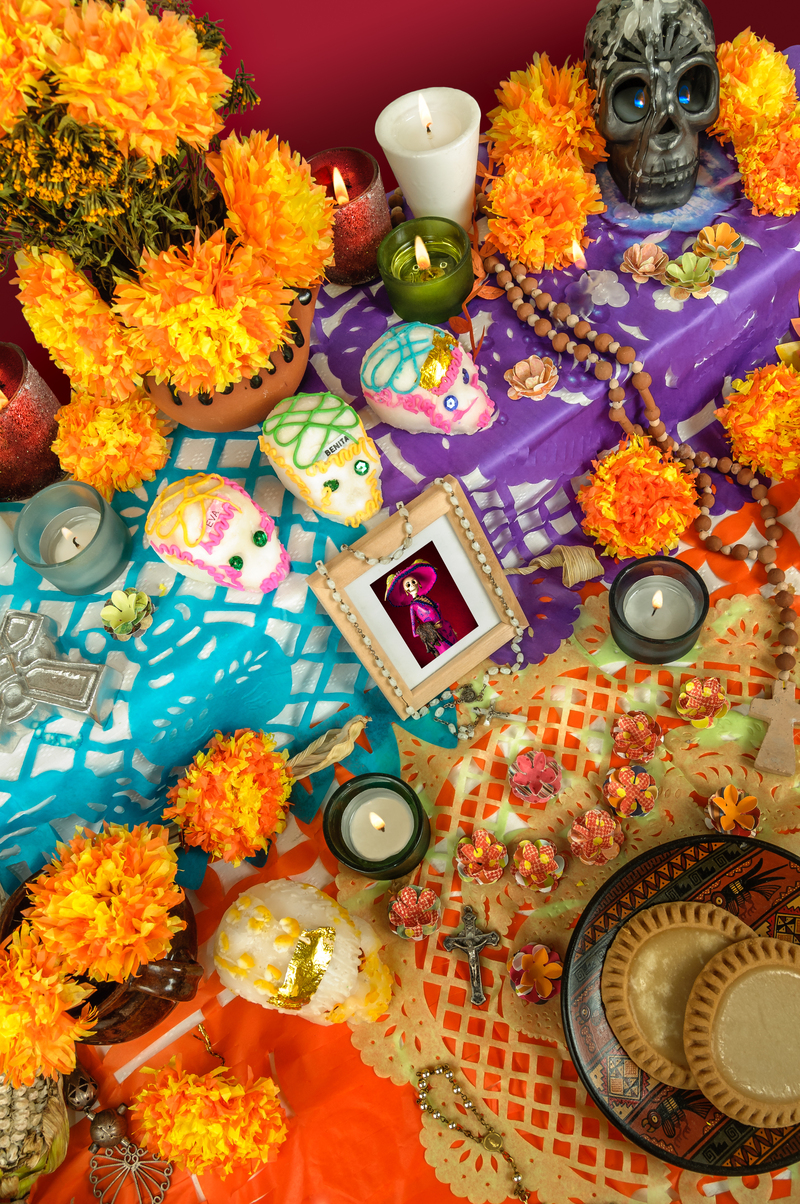Guide to Prolonging the Beauty of Poinsettias
Posted on 18/08/2025
Comprehensive Guide to Prolonging the Beauty of Poinsettias
Poinsettias are a staple during the holiday season, brightening homes with their vibrant red, pink, or cream-colored bracts. However, many people struggle to keep these beautiful plants thriving beyond the festive period. This guide to prolonging the beauty of poinsettias will provide you with proven tips and best practices, ensuring your poinsettia looks its best for weeks and even months to come.

Understanding the Poinsettia: Origins and Characteristics
The poinsettia (Euphorbia pulcherrima) is native to Mexico and Central America. Known for their colorful bracts--the modified leaves that most people mistake for petals--poinsettias have become synonymous with the holiday season. To successfully extend the lifespan of poinsettias, it's crucial to understand their needs and natural growing conditions.
Why Do Poinsettias Lose Their Vibrancy?
- Improper Watering can lead to wilting and fallen leaves.
- Insufficient Light causes faded foliage and poor growth.
- Temperature Extremes may result in shock or bract drop.
- Neglecting Proper Care after the holidays leads many to discard their plants prematurely.
By addressing these challenges, you'll be well on your way to keeping poinsettias beautiful for longer.
Optimal Placement for Long-Lasting Poinsettias
One of the most important steps in maintaining the longevity of poinsettias is proper placement within your home or workspace.
1. Choose a Bright Spot
- Place your poinsettia in a room with plenty of natural light. A south- or east-facing window is ideal.
- Avoid direct sunlight, which can scorch the leaves.
- Low-light areas can cause bracts to fade early.
2. Maintain Consistent Temperature
- Poinsettias prefer temperatures between 65?F and 75?F (18?C - 24?C) during the day.
- Night temperatures should never drop below 60?F (15?C).
- Avoid cold drafts, heaters, or placing your plant near frequently opened doors.
3. Avoid Stress From Drafts
- Keep your poinsettia away from windy spots and areas with sudden temperature changes.
- Drafts can cause leaf and bract drop.
Watering Techniques: Key to a Healthy Poinsettia
Both overwatering and underwatering can shorten the vitality of poinsettias. Here's how to find the right balance:
1. Check Soil Moisture Regularly
- Before watering, stick your finger into the soil about one inch deep.
- If the soil is dry, water your plant; if it is moist, wait before watering again.
2. Use Proper Watering Methods
- Water thoroughly until water drains from the bottom of the pot.
- Never let the plant sit in standing water--empty saucers after watering to prevent root rot.
3. Avoid Watering the Leaves and Bracts
- Direct water onto the soil rather than the plant's foliage to avoid spots or fungal diseases.
Consistent watering is essential in prolonging your poinsettia's color and health.
Humidity and Fertilization: Going the Extra Mile
Keeping the Correct Humidity Levels
- Homes are often dry in winter, which can stress poinsettias.
- Maintain a humidity level of 50-60% where your plant is placed.
- Increase humidity by grouping plants together or placing a tray of water nearby (not under the pot).
Feeding Your Poinsettia
- Poinsettias rarely need fertilizer during the blooming period.
- After the bracts drop (usually in late winter or early spring), start monthly feedings with a balanced, all-purpose houseplant fertilizer.
- Too much fertilizer while flowering can harm the plant.
Post-Holiday Care: Extending the Display Year-Round
Many people aren't aware that with proper care, poinsettias can be kept as attractive green houseplants or even encouraged to rebloom year after year. Here's how:
After the Holidays: Transitioning Poinsettias
- Once the bracts fade, prune the plant back to about 4-6 inches tall to encourage new growth.
- Continue with regular watering and keep the plant in a bright spot.
Spring to Summer Care
- Once the risk of frost passes, you can move your poinsettia outdoors for the summer.
- Select a location with filtered sunlight.
- Continue monthly fertilizing and maintain consistent moisture.
- Watch for pests like whiteflies or spider mites, and treat if necessary.
The Reblooming Process: For Next Year's Blossoms
To prolong the beauty of poinsettias annually and encourage colorful bracts for the next holiday season, you'll need to simulate their native photoperiod:
- From late September to early November, keep your plant in complete darkness for 14 hours every night.
- During the daytime, move your poinsettia to a sunny spot for at least 6 hours of indirect light.
- This triggers the formation of new colorful bracts.
- Maintain consistent watering and temperatures throughout the process.
By following this routine, you can enjoy your poinsettia's brilliant color year after year!
Common Poinsettia Issues and How to Solve Them
Poinsettia Leaves Turning Yellow and Dropping
- This can indicate overwatering, cold drafts, or poor drainage.
- Solution: Ensure your pot has adequate drainage and avoid overwatering. Relocate the plant away from cold windows or vents.
Wilting or Drooping Poinsettias
- Usually the result of insufficient water or root rot from too much water.
- Solution: Check soil moisture and roots. Adjust watering as needed and remove decayed roots if present.
Pale or Faded Bracts
- Often caused by inadequate light.
- Solution: Move the plant to a brighter location, ensuring it receives ample indirect light.
Decorative Display Tips for Lasting Poinsettia Beauty
- Use decorative pots or baskets, but ensure proper drainage holes.
- Group poinsettias with other houseplants to boost humidity and create a festive display.
- Rotate the plant occasionally for uniform growth and color development.
- Remove dust from leaves with a gentle, damp cloth to keep them vibrant.
Pet Safety and Poinsettias: Fact vs. Fiction
Poinsettias have long been rumored to be highly toxic to cats and dogs, but the truth is their toxicity is mild. Chewing on leaves or stems may cause mild stomach upset, drooling, or vomiting, but is seldom serious. To be safe:
- Keep poinsettias out of reach from pets.
- If a large amount is ingested, consult your veterinarian.
FAQs: Practice Sustainability with Your Poinsettia
Can I plant my poinsettia outdoors?
In USDA zones 9-11, poinsettias can survive outdoors year-round. In other regions, keep them as houseplants or move outside only during summer months.
How long do poinsettias last?
With proper care, the beautiful bracts can last up to 4-6 months. Many gardeners keep their poinsettias alive as foliage plants throughout the year.
Are colored bracts natural?
Yes! Bracts come in red, pink, white, cream, and marbled varieties--though some unusual colors are products of dyes or paints.

Pro Tips for Prolonging the Beauty of Poinsettias
- Inspect the plant carefully before purchase. Choose one with yellow center flowers (cyathia) that are tight and unopened for longer-lasting color display.
- Transport your poinsettia home carefully--cold winds or improper packing can damage leaves and bracts quickly.
- If your home is dry, use a humidifier to help maintain optimal humidity.
- Keep away from fresh fruit bowls, as ripening fruit emits ethylene gas which can shorten poinsettia lifespan.
Conclusion: Enjoying Beautiful Poinsettias Year After Year
With the right care, knowledge, and a little attention to detail, your poinsettias can flourish for months--and even years--beyond the holiday season. Remember the keys to prolonging the beauty of poinsettias: provide bright, indirect sunlight; maintain steady warmth and gentle humidity; water properly; and avoid drafts and extremes. For the dedicated enthusiast, the joy of reblooming your poinsettia is a rewarding yearly ritual.
By following this in-depth guide and implementing these expert tips, you can successfully extend the lifespan, color, and allure of your poinsettia, ensuring it remains a dazzling highlight in your home all year long.
Latest Posts
Guide to Prolonging the Beauty of Poinsettias
Enhance Your Office with These 10 Effortless Plants
Red Roses: The Heartbeat of Valentine's Celebrations





